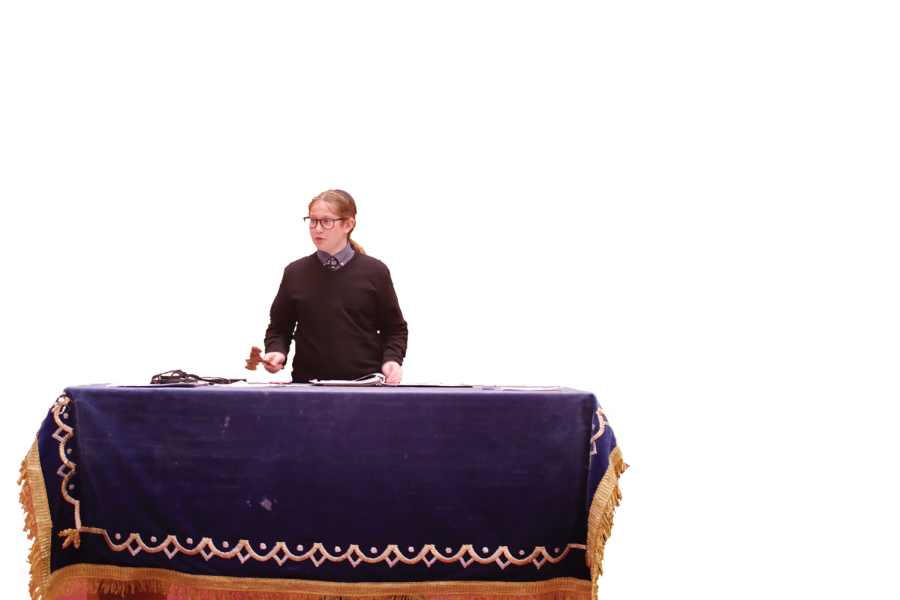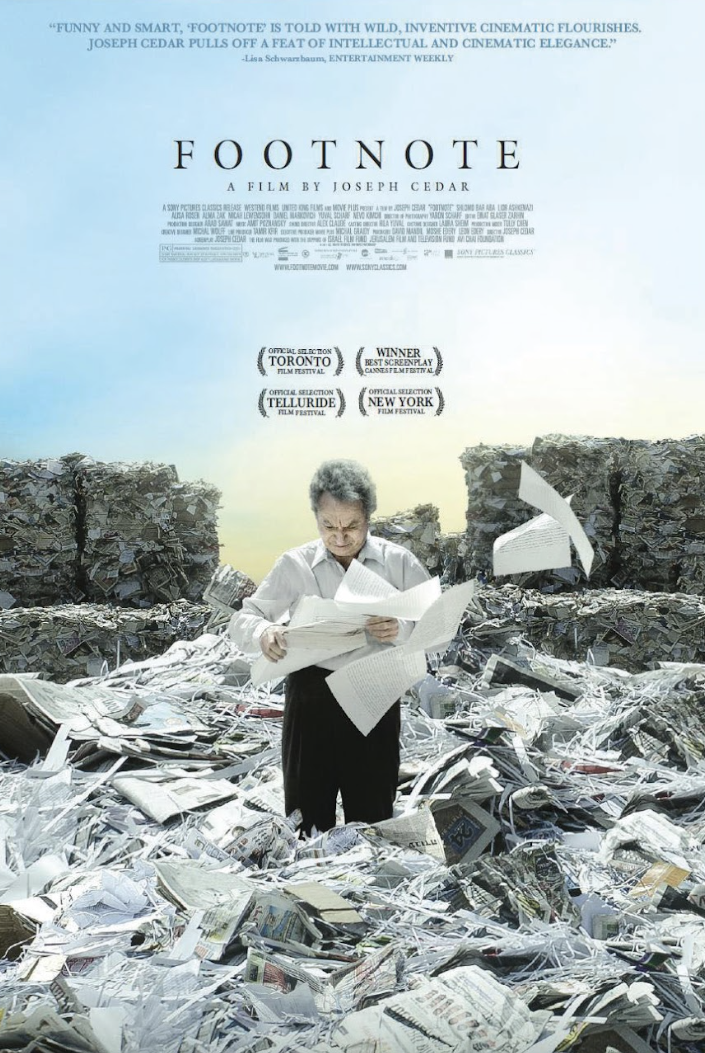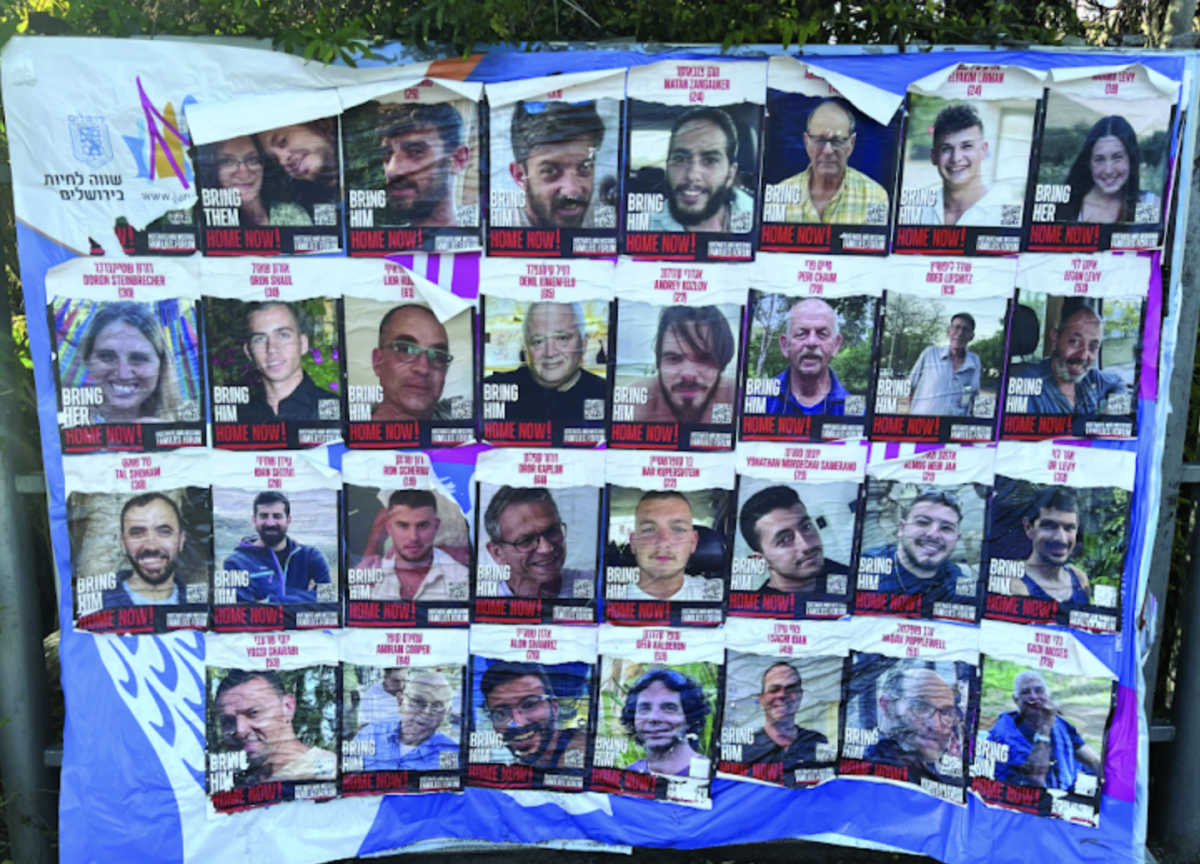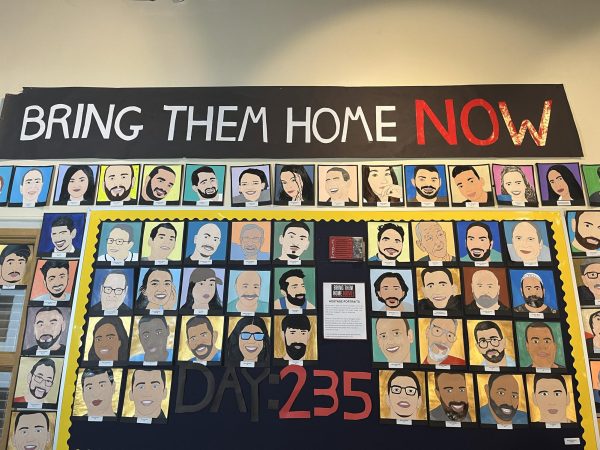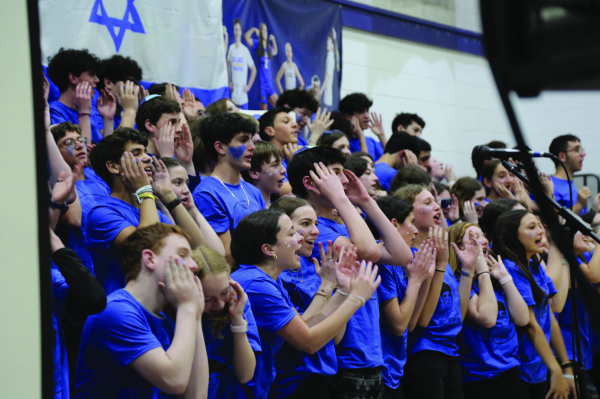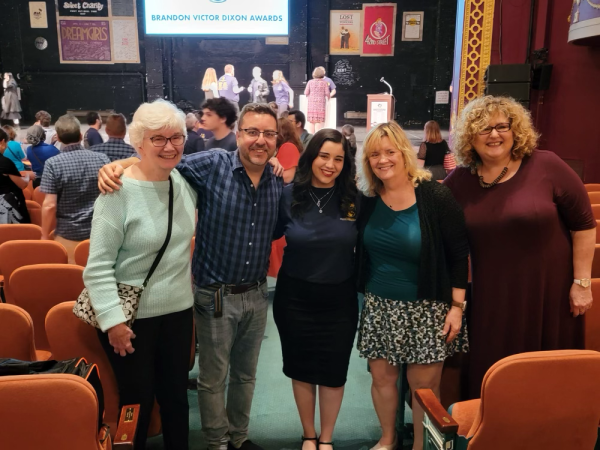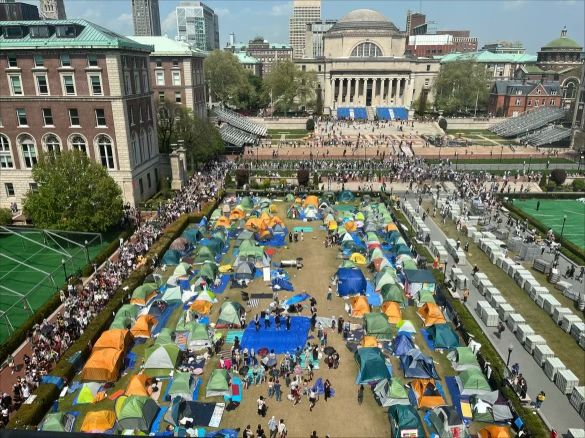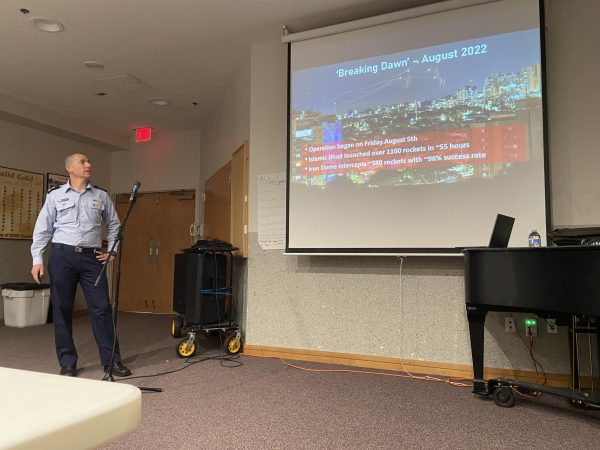Learning to legislate
Eighth grade participates in annual Model Congress simulation
April 21, 2023
For one day, eighth-graders Aliza Braier, Mali Osofsky and Anna Polon get the opportunity to act as congresswomen and rise to present their bill on school sexual misconduct. They work to convince their classmates to vote in favor of the bill. After weeks of
preparation, the students finally show off their hard work during Model Congress, one of the most memorable and challenging middle school projects at CESJDS.
Model Congress is an annual event where students in eighth grade present and debate bills that they created. The two-day event serves as a culmination of their studies about the U.S. Congress in government class.
“I liked the collaborative portion, so not just arguing with people from other bills but sort of the deliberation we got to do within our own team and our own committees,” Osofsky said. “…I enjoyed that we got a lot of freedom in it and we got to research some-
thing that interested us.”
Although Model Congress occurred on March 13 and 14, the process began at the beginning of the second semester when each student was assigned a subcommittee and began research for a congressional issue paper relating to that subcommittee.
After writing a position paper, students met with the other members of their subcommittee and worked to incorporate their ideas
into a bill.
“It was really rewarding when I finished the position paper and when I got the chance to actually work together with someone when I was writing my bill,” eighth-grader Lindsey Shapiro said. “After all your work, it’s nice to know that it paid off.”
Once they were finished, students presented their bills to their class in the form of a slideshow, which included their findings
about the issue they picked and how they plan to solve it.
From there, teachers picked bills to go to the house floor to be presented before other students, debated and voted upon. Students
are required to take a stance on bills and give 90-second speeches in front of the house either in favor or against the bill. Many believe this is the hardest part of the process.
“I think that was really difficult because [they] had to learn a vast array of ideas and do [their] best research in order to be in
favor of or against the bill and that requires a lot of curiosity on the part of the student,” middle school social studies teacher Heidi Zansler said.
The Model Congress process builds on skill sets that students begin to develop the year before in the Climate Summit, a similar
simulation in seventh grade. It also teaches foundational skills for high school, according to middle school social studies teacher Matthew Jacobson.
“You need to go out, you need to find the research that’s going to help you to support your best argument,” Jacobson said. “So [it
teaches] synthesis of research, analysis of research and then turning all of that into a coherent argument in terms of why or why
not they should support a bill.”
In the weeks leading up to the event, teachers walked through the structure of Model Congress and language that would be used.
Students learned the order of speeches and debating for each bill and phrases such as “point of inquiry” and “motion to return to
previous question,” all of which were put into use during the event.
Because of the vastness of this project, students often get overwhelmed at the start because they do not see how they will reach
the final result.
“In the beginning, I was really confused because you only have this many classes to do so much work and then it honestly goes by
pretty quickly, but it gets easier as you start to understand what you’re doing,” Shapiro said.
On the actual day of Model Congress, both of Zansler’s eighth-grade classes met in the Beit Midrash and both Jacobson and middle school social studies teacher Deborah Feigenson-Savoie’s classes met in the theater.
“Every single year I’m always blown out of the water,” Zansler said. “I’m just sort of mystified by the level of care and dedication
and investment that the students are putting into it. Every single year.”


